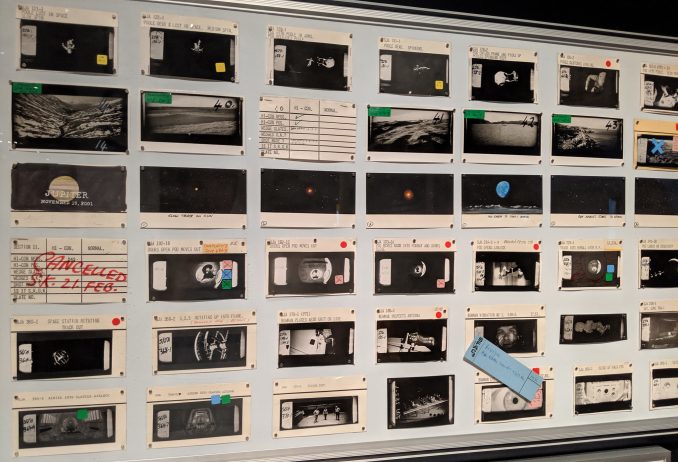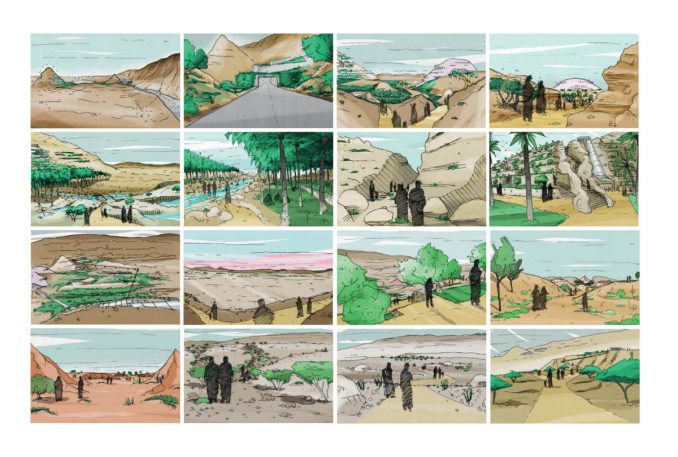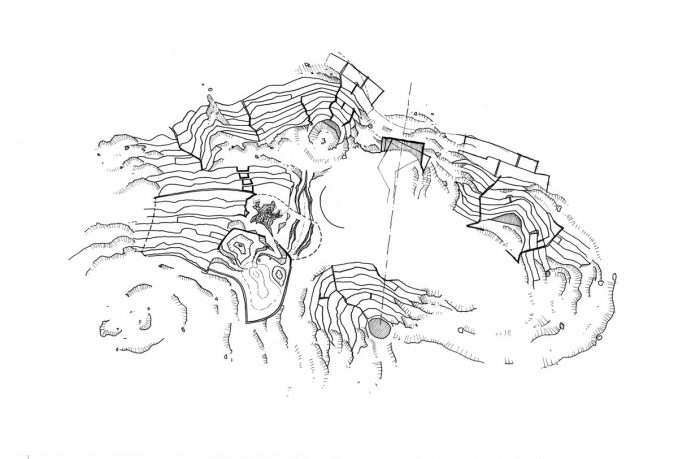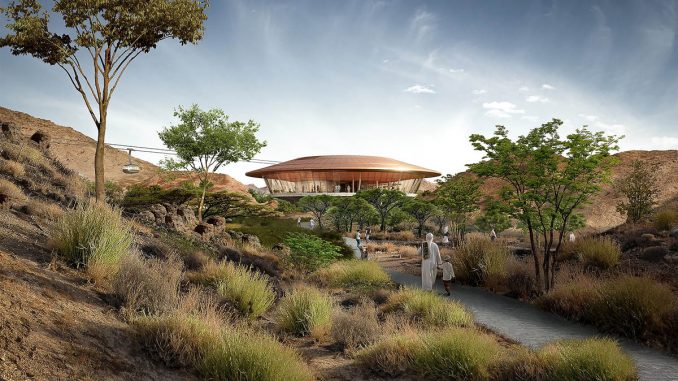Article by Henry Jefferies
When formulating a design response, the plan drawing is an excellent tool. It is our ‘go to’ and quite often the first thing we start to draw. It is often the first thing we excitedly show our clients when we’ve created our vision for the project. As landscape architects, we adopt cross-disciplinary thinking to carry out complex coordination across layered contexts to produce meaningful responses. Therefore, the plan drawing helps us spatially organise our thinking and develop strategies to produce scheme designs. This is often accompanied by visuals, perspectives, sections, photos, videos, flyovers or flythroughs to communicate the 3D (or attempt to) – to show our clients what we intend by our designs or to express how it might feel to sit on that bench or have a coffee on that street.
However, some of us drift away from the trusty plan during the design process. Immersing ourselves in experience design is about imagining what it will be like to be there. But how can we best design using our own experience memory? The plan drawing is rarely the sole ally in this process. It can be useful to draw from the experiences of other ‘visual communicators.
Personally, as a keen filmophile film storyboards have always been fascinating to me. For example, those directed by Ridley Scott or Stanley Kubrick often contain notes and scribbles and (obsessive) attention to detail that is particularly interesting. The way the storyboards communicate the sequencing of events or experiences in the early development of the film can often reflect what we try to visualise in our creations in the landscape. Not that we would want to literally sneak the maze from The Shining or the neon streets of Blade Runner into our proposals – but we hope that our vision of experience manifests itself in the representation offered to the user. Our spaces create the desired feeling that they are functional, beautiful, and lasting, as well as sustainable, meaningful and resilient. A thread to a moment is maintained through the design stages and captured authentically in the subsequent drawings.

As such, a design tool in the early stages and concept formation can be ‘borrowed’ from such film titans, using sketch perspectives in sequence to create a journey or set of journeys through space. This would allow us to immerse ourselves in the process of thinking about experience – imagining sound, smell, and touch, as well as the narrative of the journey, the movement as well as the pause and reflection. This is also a quiet immersion that can detach us momentarily from the complexity and scope of the thought required to create a robust proposal.
It can be a very personal journey because it can reflect our own experiences and values, but it can also ignite the discussion around the experience with colleagues or clients. The culmination of this approach would yield a multitude of variations that can feed back into the final sequence – and eventually the plan drawing – ultimately enriching the other tried and tested forms of drawing spatial organisation and visual communication.

A particular project where this process provided successful outcomes was the Oman Botanic Garden. This project focused on the visitor experience and created an immersive ‘journey through the landscape’ that celebrates Oman’s rich botanic diversity. The early stages of the project involved some amazing field trips in Oman that covered everything from endless sand dune landscapes to densely vegetated forests and agricultural terraces.
Loaded with this experience and knowledge, I was personally struggling to translate this into design through plan and section. We started to sketch visualisations or snapshots and storyboard the experience from the visitor car park, through the external gardens and into the biomes. This instinctively drew from memory and experience more readily and allowed a piecing together of the journey with more ease. Combined with our developed design principles, we could play with the sequencing of experience through the garden, creating contrasting open views and enclosed spaces, shelter and exposure, scale, colour, material, aided orientation and wayfinding.
As a result, we used the storyboard in our design workshops to discuss and agree on the final sequence and eventually implement it into the plan. Drawing these moments back into the wider coordination and functions of space gave us more conviction in our design and more confidence in the translation of experience from the plan to the delivery of the project. There were, of course, many routes through the gardens, and the intention was not to overly prescribe a particular narrative. Still, it was an innovative and useful tool to use in conjunction with all of the other design tools at our disposal.

This was one part of the design process in a large project which involved complex orchestration of expertise across a layered context by a multidisciplinary team, led by Arup alongside Grimshaw and Haley Sharp Design. This approach allowed us to take that knowledge of site combined with our design principles and create an experience with confidence that set the foundation for the subsequent design to build upon. Perhaps most importantly, it resulted in a blueprint that champions innovation in design thinking as an asset within our multidisciplinary skill set at Arup.

Without a doubt, the tried-and-tested approaches in design in landscape architecture will continue to guide us and be our sounding board, however, discovering new heights and innovation in our experience-led ideation expands the horizons of interpretation, reception and execution of projects. Does this mean a tectonic shift in our thinking and practice? Yes and no. Our discipline is going through that shift, but it will not bear fruits for every project at every turn. The design intuition grounded in traditional landscape design practice is the root of all innovation; after all, we need to look out for when and how we can reinvent and branch out to other disciplines and artistic realms.
For further information on the Oman Botanic Garden https://www.arup.com/projects/oman-botanic-garden
Design Process: Storyboarding the Landscape
Article by Henry Jefferies, Senior Landscape Architect at Arup, London.
Image Credits: Courtesy of Arup unless otherwise captioned.
